PTFE is an acronym for the chemical Polytetrafluoroethylene and is frequently used as a coating for non-stick pans and cookware. This polymer is unique in a number of ways that make is highly useful for cooking as well as industrial applications. Due to the strength of the carbon-flourine bonds it cannot be wet by water and is also non reactive to foods.
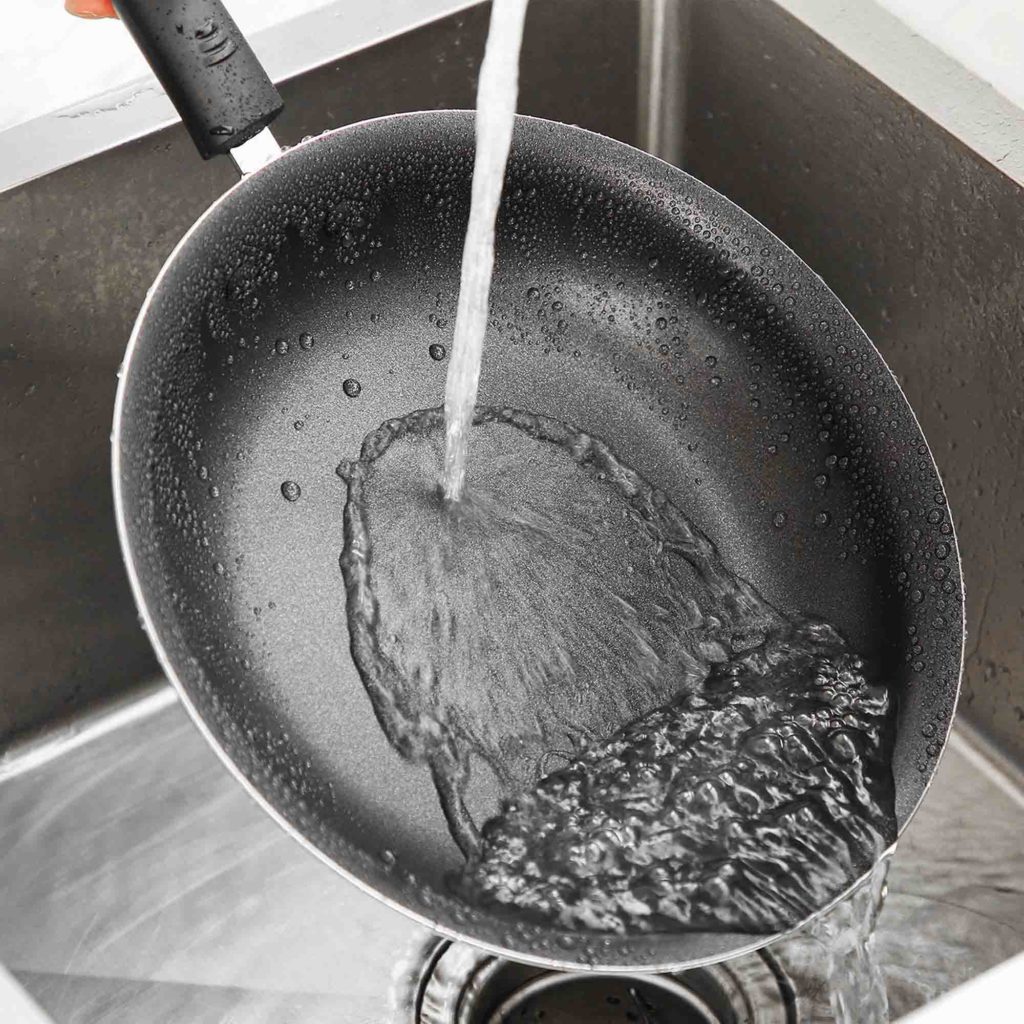
PTFE lined cookware is easy to wash and allows you to cook without worry of food sticking. However, for decades, scientists have debated whether PTFE (and it’s more commonly used name, Teflon) is safe for cooking. Both the Environmental Protection Agency and The American Cancer Society have recognized studies suggesting a link between increased incidence of cancer and use of PTFE cookware, but they also admit that the studies are not conclusive.
While PTFE itself is non-toxic, it was long made using PFOA, a chemical with proven negative health impacts. There is also potential health risk when the compound is exposed to high temperatures. As many consumers are increasingly becoming aware of our exposure to environmental toxins, the question becomes, is PTFE coating safe?
What is PTFE?
Polytetrafluoroethylene, or PTFE, is a synthetic polymer derived from tetrafluoroethylene (TFE). It was discovered accidentally in 1938 by Roy J Plunkett while he was working for Dupont. Its high melting point, hydrophobic, frictionless and flexible nature make it an incredibly useful material for consumer and commercial applications. PTFE is used as a repellant of grease in food wrapping, a stain resistant in clothing and carpet and a non stick coating for wiper blades and hairstyling tools.
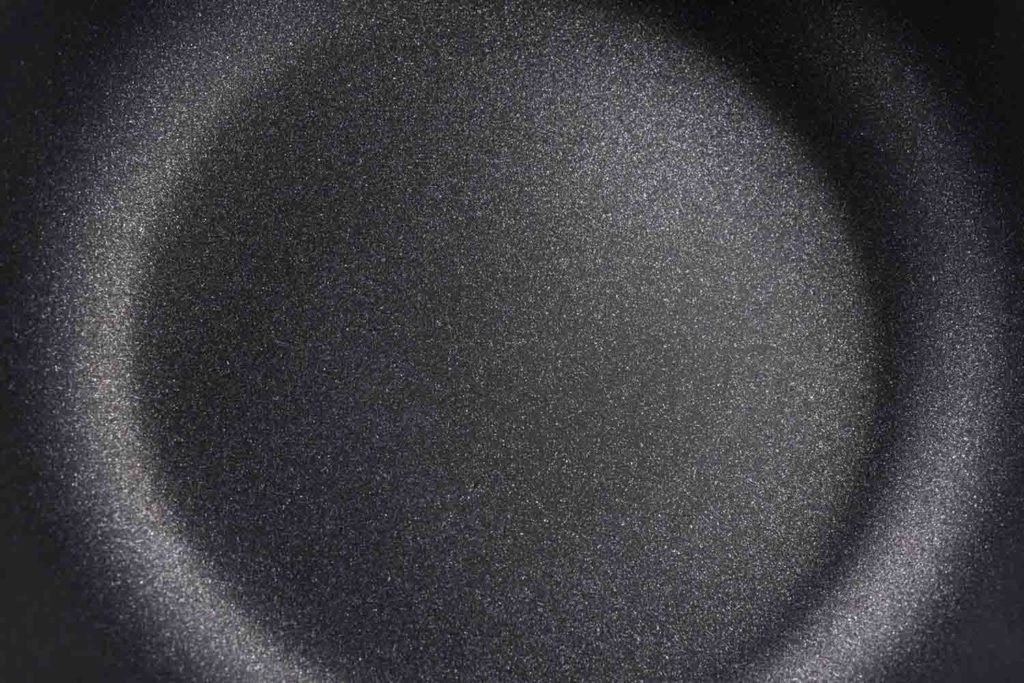
Teflon is simply the trademarked name of PTFE, they are the same polymer. The name Teflon is familiar to many consumers as a popular coating for nonstick cookware. While there are still many PTFE nonstick pans on the market, they rarely use the word Teflon as most consumers associate the health controversy with the brand name.
Is Teflon Banned?
Teflon and PTFE coatings for food applications are not banned in the United States. However, by 2014, manufacturers worked in conjunction with EPA guidance to voluntarily phase out PTFE created with long chain PFAS such as PFOA and PFOS. The breakdown of the long chain PFAS chemicals was thought to be the main contributor to health risks.
Manufacturers and the FDA are satisfied that it is not PTFE itself that produced health and environmental risk, so it remains a popular nonstick coating. Many scientists and consumers remain skeptical about the safety of any Teflon cookware, particularly when exposed to high heat. While US governmental agencies have not taken action to curb its use, PTFE (and thus Teflon) has been a banned substance in cookware in Europe since 2008.
What Does PFOA Free Mean?
Perfluorooctanoic acid (PFOA) is a manufactured perfluorochemical that has been used in the production of PTFE. PFOA is a potential health concern because it stays in both the environment and in the human body for extremely long periods and may increase risk of cancer and other diseases. Numerous studies have found PFOA to be present in the blood almost all individuals and the International Agency for Research on Cancer classified PFOA as “possibly carcinogenic to humans”.
PFOA and the closely related PFOS are both long-chain polyfluoroalklyl substances (PFAS). Both PFOA and PFOS are no longer produced in the US or 180 other countries worldwide. 18 countries that have a special agreement with the convention allowing them to “opt-in” to new bans instead of being automatically subjected to them, including Argentina, China, India, South Korea and Russia.
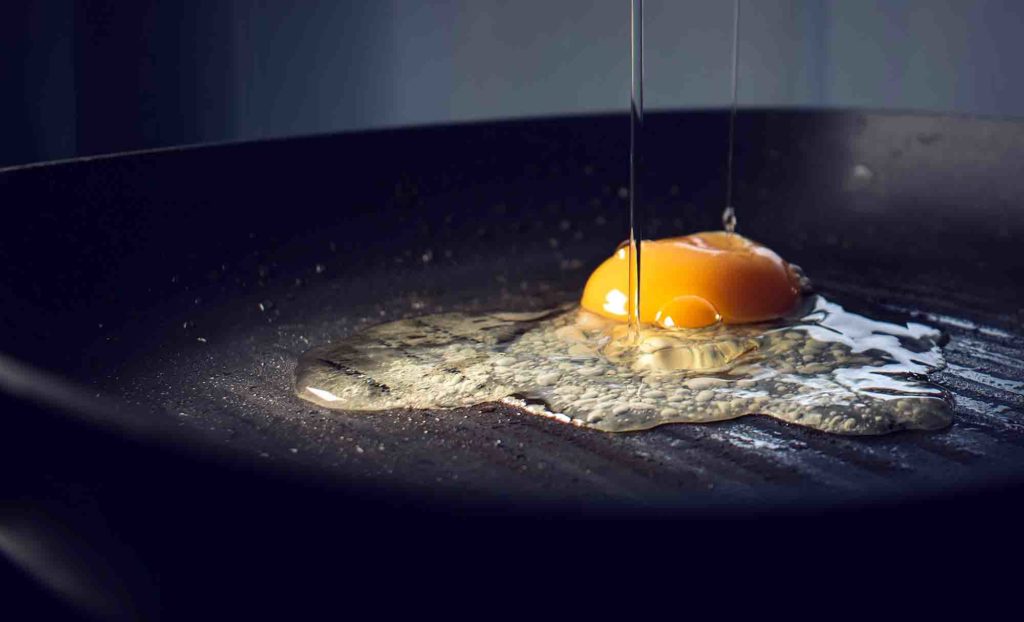
The reduction of PFOA in the environment has had noticeable impact. In a study published in the International Journal of Hygiene and Environmental Health, researchers found that the banning of PFOA correlated to the lower levels of perfluorooctanoic acid in women’s blood and a reduction in the number of low birth weight deliveries.
While any PTFE pan manufactured and sold in the US will be PFOA free, it may have been created using a short chain PFAS. Short-chain PFASs are widely used as alternatives to PFOA or PFOS, but there is mounting evidence that these aren’t safe alternatives. Short chain PFAS move quickly through water and soil causing sprawling and long-term exposure and there is a damning 2019 report from the EPA that cites similar effects to PFOA.
In 2020 the FDA announced a voluntary agreement with manufacturers to phase out some of the short chain PFAS being used in food packaging.
Is PTFE Safe in Cookware?
So you now know to stay away from PFOA (it is still possible to buy PFOA coated pans from other countries such as China and India) and to think twice about anything containing PFAS. But is there any PTFE cookware that is safe?
Companies often aren’t transparent about the chemical makeup of their nonstick cookware and go to great lengths to tout the safety of PTFE. It is possible for a manufacturer to claim no PFAS were used, but to have used another perfluorinated substance that has similar issues and environmental impacts. If you are buying non stick cookware, it’s worth doing your homework.
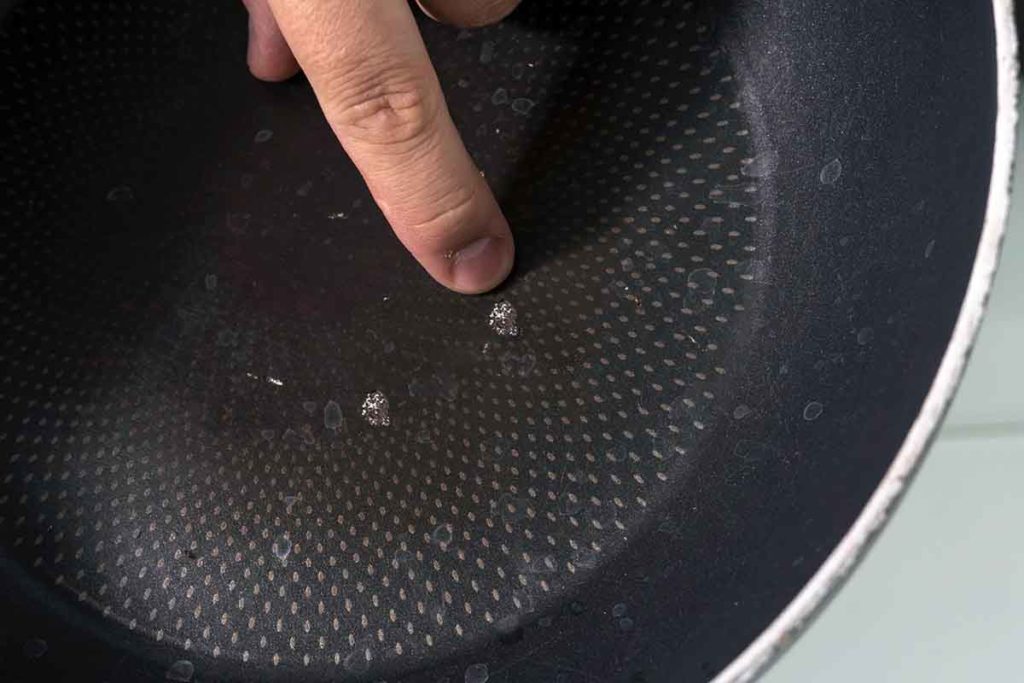
There is also an inherent danger to PTFE itself. When heated to just 392 degrees (something achievable by just a few minutes on a gas stove), the polymer begins to breakdown and releases gasses that are toxic to humans and animals. Polymer Fumes Fever, also known as “Teflon Flu”, is a medical condition producing fever and flu like symptoms that arises when someone inhales these toxic gasses for a prolonged period. These fumes can kill sensitive animals like birds.
So Is PTFE Coating Hazardous to Your Health?
The bottom line is that there are serious questions about the safety of PTFE that has been created with both PFOAs and alternative PFAS. The EPA confirmed as much in its 2019 report on the use of PFAS alternatives in the creation of PTFE. GasX and other short chain PFAS alternatives create an equal risk to previous versions of PTFE production.
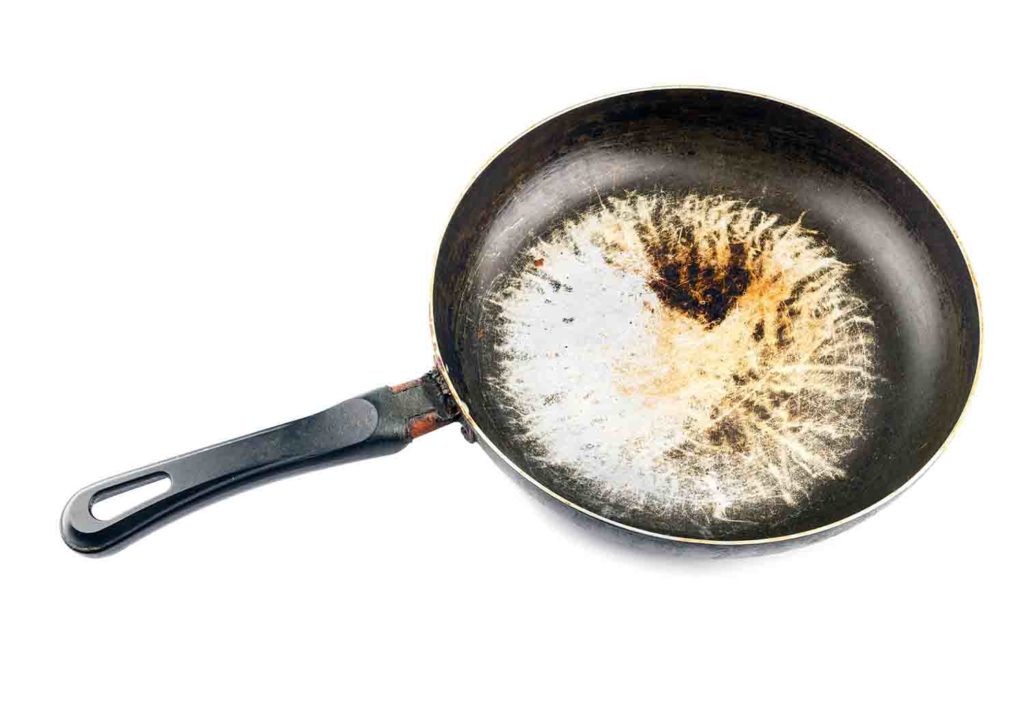
While there may be a debate about the extent of these hazards, the evidence seems conclusive that, minimally, all PTFE coatings do carry health risks with high heat and prolonged use. With so many great alternatives on the market, I see no reason why I would take a chance on my family’s safety and risk widespread environmental harm to use a PTFE coated pan.
If you are looking for an alternative with no safety risks, consider investing in some cast iron pans. Once properly seasoned, these pans will provide a natural non stick surface and are virtually indestructible. If you are looking for a lighter weight option, ceramic pans are a safe Teflon pan alternative. Stainless steel might be the safest and longest lasting, I own pans over 20 years that still work great, but they take practice to get right.
Seasoning a cast iron is easier than you think.
Slick Marketing Non-Stick Pots and Pans
Manufacturers go to great lengths to avoid mentioning Teflon and PTFE, when they actually use it on their cookware.
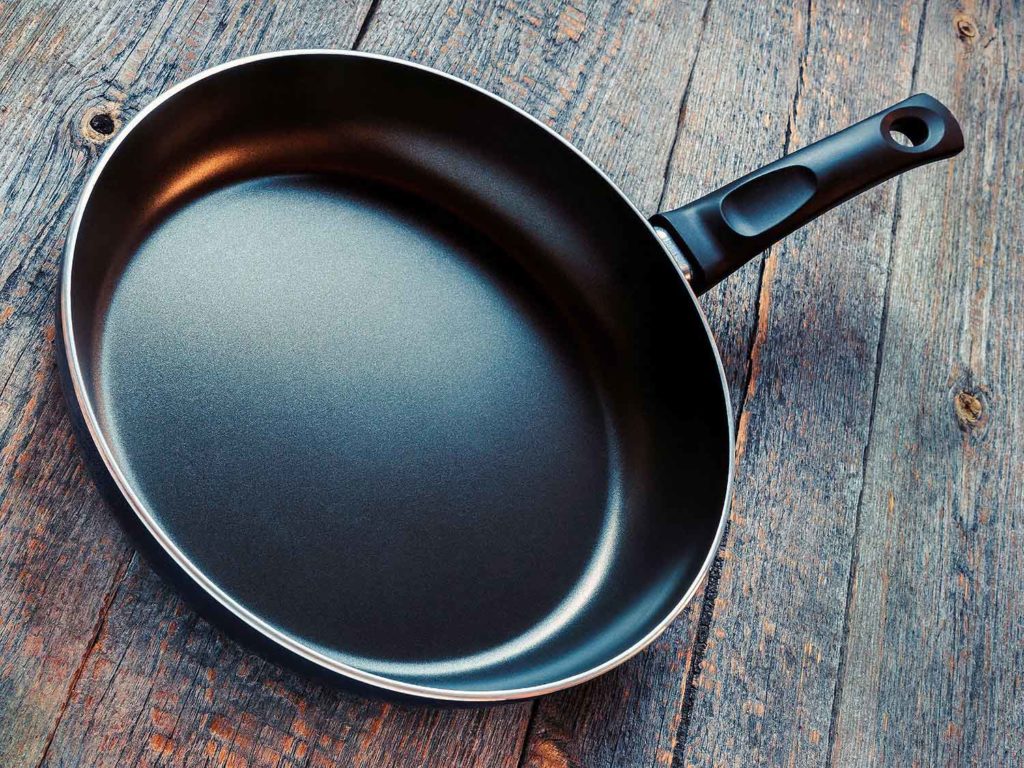
Most of the time I just go to the FAQ on the manufacturer’s website, if they have one, and look up PTFE. Some manufacturers don’t provide any information about the non-stick material, but that doesn’t mean they don’t use PTFE.
References
Short-chain perfluoroalkyl acids: environmental concerns and a regulatory strategy under REACH. By Stephan Brendel, Éva Fetter, Claudia Staude, Lena Vierke, and Annegret Biegel-Engler
FDA Statement: FDA Announces Voluntary Agreement with Manufacturers to Phase Out Certain Short-Chain PFAS Used in Food Packaging. Issued by Stephen M. Hahn, M.D.Commissioner of Food and Drugs – Food and Drug Administration ( December 2019 – January 2021 )
Perfluorooctanoic acid and low birth weight: Estimates of US attributable burden and economic costs from 2003 through 2014. By Julia Malits, Jan Blustein, Leonardo Trasande and Teresa M. Attina.
EPA’s Per- and Polyfluoroalkyl Substances (PFAS) Action Plan
Polymer fume fever. By Taro Shimizu, Osamu Hamada, Akinori Sasaki, and Mari Ikeda
